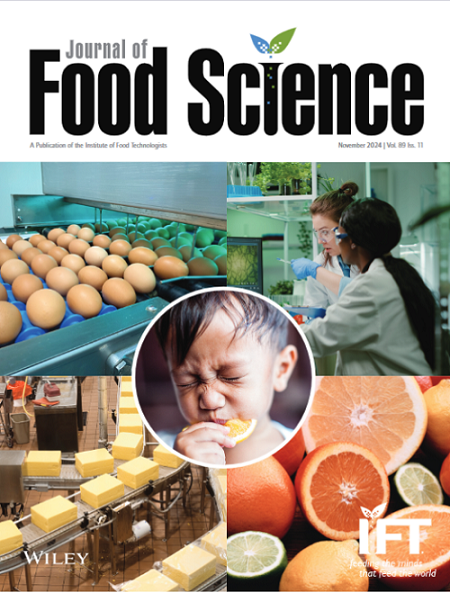Quality Evolution of Turpan Dry Red Wine During Aging Under Controlled Micro-Oxygenation
Abstract
ABSTRACT
During the aging process, oxygen regulation was applied to Cabernet Sauvignon dry red wine (CSDRW) from the Turpan region. Through physicochemical analysis, headspace solid-phase microextraction and gas chromatography-mass spectrometry (HS-SPME-GC-MS), combined with differential significance analysis and sensory evaluation, this study analyzed the effects of different oxygen concentrations on the quality of Cabernet Sauvignon dry red wine from Turpan. The results indicated that oxygen regulation facilitated the polymerization of phenolic substances, enhanced color intensity, and reduced the content of total sulfur and anthocyanins. Additionally, oxygen infusion mitigated the green and earthy notes in the wine while enhancing floral and nutty aromatic characteristics, thereby optimizing the flavor quality of the wine. Additionally, oxygen infusion mitigated the green and earthy notes in the wine while enhancing floral and nutty aromatic characteristics, thereby optimizing the flavor quality of the wine. An appropriate concentration of ethyl decanoate contributes positively to fruity and brandy-like scents. However, excessive concentrations can generate undesirable sensory characteristics such as waxy, oily, and bitter nuances, negatively affecting the wine's flavor balance. There were no significant effects on basic physicochemical indicators, including volatile acidity, total sugars, dry extract, and alcohol content (P > 0.05). An optimal oxygen concentration of 1 mL/L/month effectively improved the flavor of CSDRW, resulting in a more harmonious taste, a fuller body, and the highest sensory evaluation scores. This study provides theoretical and technical references for the application of oxygen regulation in improving the quality of Turpan wine.
Practical Applications
This study provides practical guidance for wine-producing regions that share similar climatic conditions (e.g., high temperatures, intense solar radiation, and significant diurnal temperature variations) with the Turpan area.





 求助内容:
求助内容: 应助结果提醒方式:
应助结果提醒方式:


